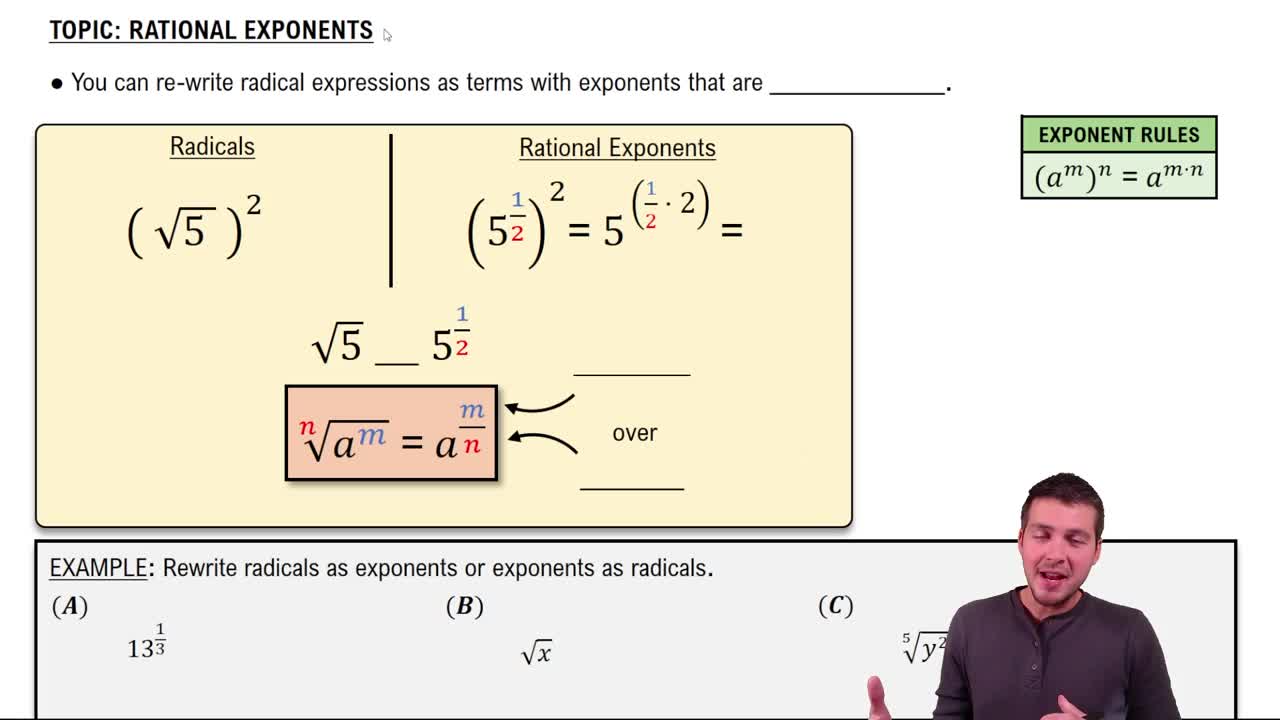Here are the essential concepts you must grasp in order to answer the question correctly.
Rational Exponents
Rational exponents are a way to express roots using fractional powers. For example, the expression x^(1/n) represents the nth root of x. This concept allows for the simplification of expressions involving roots and powers, making calculations more manageable. Understanding how to convert between radical and exponent notation is crucial for solving problems involving rational exponents.
Recommended video:
Radical Notation
Radical notation is a mathematical notation used to denote roots, such as square roots or cube roots. The radical symbol (√) indicates the root of a number, where the index of the root is specified when it is not a square root. Converting expressions from rational exponents to radical notation is often required in algebra to present answers in a more recognizable form, especially when dealing with roots of variables.
Recommended video:
Simplifying Expressions
Simplifying expressions involves reducing them to their simplest form, which often includes combining like terms, reducing fractions, and applying exponent rules. In the context of rational exponents, this means using properties of exponents to rewrite expressions in a more manageable way. Mastery of simplification techniques is essential for effectively solving algebraic problems and ensuring accurate results.
Recommended video:
Simplifying Algebraic Expressions
 Verified step by step guidance
Verified step by step guidance Verified Solution
Verified Solution

